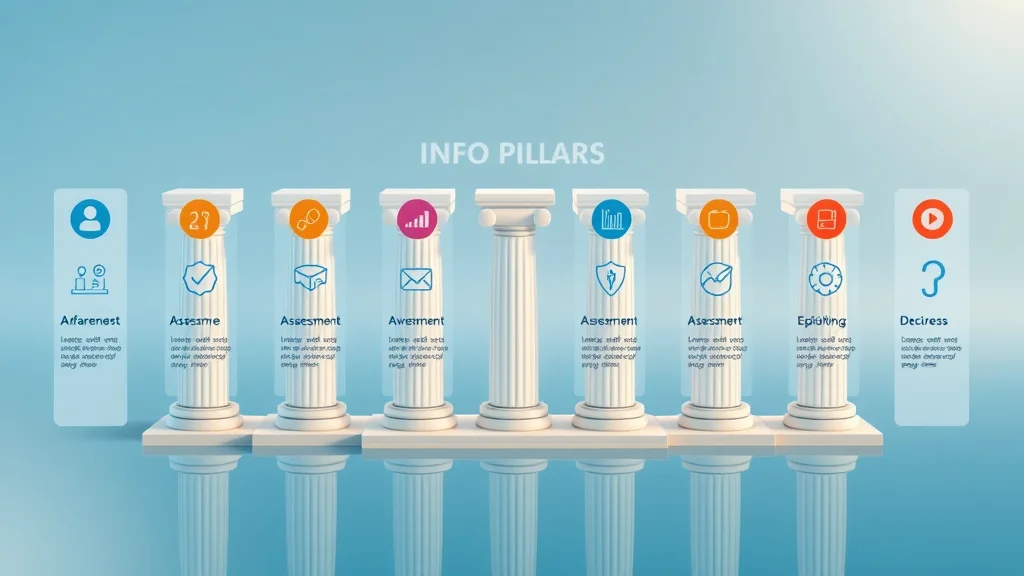Did you know? Content marketing strategies deliver 3x more leads per pound than paid search ads, yet nearly 63% of companies lack a documented content strategy. These numbers show just how much potential you could unlock by focusing on effective content marketing—and how many competitors are still missing out. This article will guide you through the most powerful approaches to content marketing, turning data-driven trends and proven tactics into results you can measure.
Startling Facts: The Proven Impact of Content Marketing Strategies
‘Content marketing strategies deliver 3x more leads per pound than paid search ads, yet nearly 63% of companies lack a documented content strategy.’
Content marketing isn’t just a buzzword. Studies show that effective content marketing transforms the way businesses grow and compete in today’s digital landscape. From building brand trust to generating high-quality leads, content marketing strategies consistently outperform traditional ads in both reach and long-term value. With more people searching online for solutions and storytelling becoming central to brand identity, investing in a strong content marketing strategy gives organisations a real edge. Surprisingly, however, many companies still don’t have a documented plan, which means big opportunities for those ready to take the lead with smart marketing strategies.

Explore how cutting-edge content marketing strategies can transform your business outcomes, as we break down recent data and spotlight the latest trends in digital marketing below.
What You'll Learn About Content Marketing Strategies
- The fundamentals every content marketer should know
- How to align your content marketing strategy with business goals
- Tactical content creation tips and trending media content types
- Steps to build and manage a successful content calendar
- How to measure and optimise your content marketing strategies for real impact
Understanding Content Marketing Strategies: Definitions and Core Concepts
What is Content Marketing Strategy?
A content marketing strategy is your master plan for creating, publishing, and sharing effective content that attracts, educates, and retains your target audience. It lays out your brand’s purpose, details which types of content to use, and connects every piece of content to wider business goals. Successful content marketers focus not just on producing media content like videos or blog posts, but on ensuring each effort moves potential customers closer to action. Essential parts of a great strategy include clear objectives, defined target audiences, an actionable content calendar, and ongoing measurement to optimise for better results. Without this focus, it's easy to invest in content creation that doesn’t produce real value for your business.
As you refine your approach, it’s also valuable to address common challenges that can hinder your progress. If you’re encountering obstacles or want practical solutions to typical content marketing pitfalls, you might find these expert fixes for struggling content marketers especially helpful: Struggling with Content Marketing? Here's the Fix.

Content Strategy vs. Content Marketing Strategy
The terms “content strategy” and “content marketing strategy” are often used interchangeably, but they’re not the same. Content strategy is the bigger picture—how your organisation manages all content across platforms, from your website to internal knowledge bases. It covers governance, workflows, and the purpose behind every content asset. In contrast, your content marketing strategy zooms in on how content is used specifically to achieve marketing goals, such as getting more leads or building authority in your field. The two must work together: without a strong content strategy, no matter how effective your marketing messages, your content can fall flat or fail to deliver consistent brand experiences.
‘Without a clear content strategy, even effective content will underperform.’ – Leading Marketing Pro
7 A’s of Content Marketing: The Pillars of Effective Content Marketing
What are the 7 A's of Content Marketing?
The 7 A’s of content marketing represent the proven pillars you need for impactful campaigns. Each “A” stands for a core principle:
- Awareness – Building initial interest through top-of-funnel content (like explainer videos or helpful blog posts).
- Assessment – Helping audiences compare options with expert guides, reviews, or webinars.
- Appeal – Making your offer compelling, using storytelling or case studies to spark interest.
- Action – Guiding users to take the next step, such as signing up, downloading, or making a purchase.
- Attribution – Connecting outcomes to specific content and channels so you can see what’s driving results.
- Advocacy – Encouraging your audience to share their experience, often through testimonials, user-generated content, or social media engagement.
- Automation – Streamlining processes with tools like email marketing software, CRM, and scheduling platforms to deliver the right content at the right time.
Each of these pillars supports a robust and effective content marketing strategy, helping you move prospects from discovery to loyal advocates while maximising efficiency and impact.

Marketing Strategies Framework: The 4 Key Marketing Strategies
What are the 4 Marketing Strategies?
Within every smart marketing strategy, four core approaches guide your path to growth. Here’s how they align with content marketing strategies:
| Strategy | Purpose | Connection to Content Marketing |
|---|---|---|
| Market Penetration | Increase share in existing markets | Drive engagement with targeted content marketing strategies |
| Market Development | Enter new markets | Expand reach through new content types and platforms |
| Product Development | New products for existing markets | Promote offerings with educational effective content |
| Diversification | New products in new markets | Leverage innovative content strategy to attract new audiences |
Integrating one or more of these approaches with your content marketing plan ensures you’re not just creating content but using it as a growth engine. Whether you’re focused on deeper engagement, market expansion, new product launches, or diversification, the right content types and distribution strategies can fuel success.

Marketing Rules: Applying the 3-3-3 Rule in Content Marketing Strategies
What is the 3-3-3 Rule in Marketing?
The 3-3-3 rule is a practical framework for streamlining your content marketing strategy. Here’s how it works:
- 3 target segments – Focus on the most valuable parts of your audience that align with your business goals.
- 3 key messages – Craft three consistent, memorable messages that resonate with your audience and reinforce your brand.
- 3 effective channels – Identify the top platforms (such as your website, email marketing, or social media) where you can reach your target audience most efficiently.
By focusing your efforts using the 3-3-3 rule, you avoid spreading your resources too thin while ensuring your brand voice and content maintain clarity across platforms. This approach makes it easier to create, measure, and refine effective content marketing over time, especially as your strategy evolves.
Step-By-Step Guide: Creating a Successful Content Marketing Strategy
Setting Business Goals and KPIs for Content Marketing Strategies
Every content marketing strategy starts with clear business goals. Align your content creation with outcomes that matter—whether that’s lead generation, higher sales, improved brand trust, or increased website traffic. Begin with a content audit to pinpoint what’s working and what needs improvement. Set Key Performance Indicators (KPIs) like unique visitors, engagement rates, click-through rates, or conversions. By measuring and tracking progress, you ensure your content marketing moves the needle on your growth objectives. Remember, tying content to business targets allows you to make the case for content investments and optimise your approach over time.

Identifying Your Audience for Effective Content
Understanding your target audience is central to crafting effective content marketing. Use market research, surveys, website analytics, and direct conversations to build detailed buyer personas highlighting demographics, needs, and online behaviours. Segment your audience to create targeted messages that address their specific challenges and interests. Tools like Google Analytics or social media insights can help you refine this process, while regular feedback ensures your persona profiles stay up to date. By knowing your audience inside and out, your content marketer team can produce content that consistently attracts, informs, and engages.
Developing Your Content Calendar
A well-organised content calendar is the backbone of any successful content marketing strategy. It helps you plan, schedule, and coordinate content creation across channels, ensuring a consistent brand presence. Start by outlining key campaigns, seasonal events, and product launches. Decide on the best content types for each phase—such as informative blog posts for education or engaging video content for boosting awareness. Allocate responsibilities, set deadlines, and use digital tools to manage workflow and track progress. By sticking to your calendar, you keep your team on the same page and never miss an opportunity to connect with your audience.

Choosing the Right Types of Content for Content Marketing
Great content marketing strategies use a mix of content types to reach different goals. Blog posts and guides build SEO value and offer in-depth information, while video content and infographics capture attention on social media. Email marketing nurtures your leads and keeps your brand top-of-mind, while case studies or whitepapers demonstrate expertise. When mapping out your strategy, make sure to match the content type to the stage of the customer journey and the preferences of your target audience. Testing and analysing which formats perform best allows you to refine your plan and deliver high-impact results.
Distribution: Optimising Social Media Content and Channels
To maximise the reach of your content marketing, your distribution plan is just as vital as your content itself. Focus on platforms where your audience is most active—whether that’s LinkedIn for B2B, Instagram for visual storytelling, or TikTok for younger demographics. Tailor social media content to each channel’s strengths while keeping your brand message consistent. Tools like Hootsuite or Buffer can help automate postings, monitor engagement, and analyse performance. Remember, successful content marketing is not just about quantity but ensuring each post, video, or article is optimised for the right audience in the right context.
Content Repurposing for Efficient Content Marketing Strategies
Don’t let great content go to waste—repurpose assets across multiple platforms for greater reach. For example, turn a detailed blog post into an infographic, a podcast episode, or a social media video snippet. Repurposing helps save time, boosts ROI, and keeps your content strategy agile. It also ensures your target audience sees your message wherever they spend time online. A good content marketer tracks which pieces perform best so they can create more variations on those themes, maximising the value of each effort.

Measuring Performance and Optimizing Content Marketing Strategies
To ensure your content marketing strategies deliver results, you need to measure performance and make improvements. Track metrics like traffic growth, time on page, conversion rates, and shares. Tools like Google Analytics, SEMrush or social media insights show you what’s working. If some types of content perform better, double down on those formats. Continuously test headlines, visuals, calls to action, and distribution tactics. Remember, effective content marketing comes from a cycle of creation, measurement, and refinement. As marketing legend Peter Drucker said:
‘If you can’t measure it, you can’t improve it.’
Successful Content Marketing: Real-World Examples
Case Study: Transformative Marketing Strategies in Action
Let’s take a look at how one company transformed their results by using content marketing strategies. A mid-sized tech business set a goal to triple web leads in twelve months. They started with deep buyer persona research, then launched a content plan featuring weekly blog posts, targeted email marketing campaigns, and monthly video case studies. A systematic approach to repurposing high-performing content boosted reach across social media channels. Through ongoing testing and optimisation, they exceeded their business goals within eight months—achieving not just more leads but a stronger brand reputation and a growing advocate community.

Expert Insights: Marketing Pros Share Their Top Content Marketing Strategies
‘Storytelling is the bridge between a brand and its audience.’ – Renowned Content Marketer
Experts agree: effective content marketing is about blending clarity, creativity, and connection. Successful marketers recommend starting with a focused content strategy, finding your unique brand voice, and experimenting with a range of content types and platforms. Prioritise measurement and remain flexible—consumer behaviour moves fast, so the best strategies evolve just as quickly.
Content Types Breakdown: Exploring the Full Scope of Content Marketing
Written Content: Blog Posts, Guides, and Whitepapers
Written content types remain the foundation of most content marketing strategies. Well-optimised blog posts can draw organic traffic, help you win in search engine rankings, and establish authority on key topics. In-depth guides and whitepapers support lead generation by providing actionable value and unique insight, particularly for B2B or technical audiences. To earn results, use keyword research, engaging headlines, and clear visuals. Consistency is critical: set a content calendar, make sure your posts address audience needs, and always include a clear next step or call to action.

Video Content and Media Content in Modern Content Strategies
Video content and media content are now essential for engaging modern audiences. Short clips, live streams, and educational videos often get more shares and can explain complex ideas quickly. To make the most impact, craft videos with a distinct brand style, answer your audience’s main questions, and adapt each piece for social media or your website. Creating content that’s optimised for sound-off autoplay, subtitles, and mobile viewing further boosts accessibility and reach. Don’t forget to measure watch time and engagement so you can refine your approach and grow your influence with each campaign.

Email Marketing and Other Owned Channels in Content Marketing Strategies
Email marketing remains one of the highest-ROI content marketing strategies. Personalise your emails by segmenting your list and tailoring content to each target audience. Use automation tools to send the right messages at the right times—whether it’s a regular newsletter, onboarding sequence, or lead nurture campaign. Other owned channels like your website or mobile app offer spaces for evergreen guides, downloadable resources, or customer communities. Consistent high-quality content on these platforms not only nurtures leads but builds lasting brand loyalty.
- Infographics and visual media content
- Podcasts
- User-generated content
Watch this short video tutorial for a step-by-step walk-through on building a content marketing plan that drives measurable results. You’ll see the essentials of strategy planning, content calendar creation, audience research, content distribution, and performance measurement in action.
The Role of Social Media in Modern Content Marketing Strategies
Choosing Social Media Channels for Your Content Strategy
Selecting the right social platforms is key to an effective content marketing strategy. Consider where your target audience spends their time—whether it’s Facebook, Instagram, LinkedIn, or TikTok—looking at age, industry, and interests. Evaluate the features of each channel, such as Instagram’s visual strengths or LinkedIn’s B2B focus, aligning your channel mix with your business goals and the content types that perform best. Ultimately, it’s better to focus on a few channels and excel than spread your efforts too thin.
Integrating Social Media Content with Broader Content Marketing Efforts
The best content marketing strategies seamlessly blend social media content with other formats—blog posts, email marketing, and video content. Repurpose a blog’s core ideas into Instagram posts, share video snippets as stories, or drive newsletter signups via social platforms. Track which types spark the most engagement and prioritise those for further investment. Consistency and cross-promotion tie all your marketing strategies together, providing multiple touchpoints that guide your audience closer to your key business goals.

Watch leading content marketers share their actionable strategies in this exclusive interview—from storytelling tips to advanced analytics, each snippet is designed to help you make the most of your next campaign.
FAQs on Content Marketing Strategies
- What is a content marketing strategy?
- How do you develop a content strategy?
- What are the best types of content for different industries?
- How do you track the ROI of content marketing strategies?
- What are some common mistakes in content marketing?
A content marketing strategy is a plan that guides how you create, distribute, and measure content to achieve specific business and marketing goals. To develop a successful strategy, first define your audience, clarify your goals, and map out a content calendar. The best types of content for any industry depend on your business goals and where your audience spends time—test blog posts, videos, infographics, and more to find the right mix. Track your ROI using analytics tools, measuring traffic, leads, conversions, and engagement. Common mistakes include not documenting your strategy, failing to measure results, and not adapting to what your data reveals.
People Also Ask: Answering Top Questions on Content Marketing Strategies
What is content marketing strategy?
A content marketing strategy is a systematic approach to planning, creating, distributing, and measuring content with the objective of achieving specific business and marketing goals through the use of relevant, valuable, and consistent content.
What are the 7 A's of content marketing?
The 7 A's of content marketing are: Awareness, Assessment, Appeal, Action, Attribution, Advocacy, and Automation—each representing a stage or component essential to effective content marketing strategies.
What are the 4 marketing strategies?
The four primary marketing strategies are Market Penetration, Market Development, Product Development, and Diversification. Each influences how content marketing strategies are formulated and applied to achieve growth.
What is the 3-3-3 rule in marketing?
The 3-3-3 rule encourages brands to identify 3 target audiences, tailor 3 core messages, and focus on 3 key marketing channels—streamlining content marketing strategies for clarity and efficiency.
Key Takeaways for Effective Content Marketing Strategies
- A documented content marketing strategy is essential for content marketer success
- Diverse types of content drive broad engagement
- Measuring business goals ensures strategy effectiveness
- Continuous learning is crucial in adapting marketing strategies
Next Steps – Elevate Your Content Strategy
To learn more about building your online authority, email us at smartmarketing@dylbo.com.
If you’re ready to take your content marketing to the next level, it’s essential to stay ahead of the curve by understanding the latest shifts in the industry. For a deeper dive into the emerging trends that are shaping the future of digital marketing, explore our comprehensive guide on content marketing trends changing the game now. Discover how innovative strategies and evolving consumer behaviours can unlock new opportunities for your brand. By keeping your finger on the pulse of what’s next, you’ll be better equipped to adapt, innovate, and achieve lasting results in a rapidly changing landscape.
To deepen your understanding of effective content marketing strategies, consider exploring the following resources:
This article outlines key approaches such as understanding your audience, creating high-quality content, leveraging SEO, and embracing video marketing to enhance your content marketing efforts.
This piece discusses current effective methods, including native ads, long-form case studies, interactive content, and branded podcasts, providing insights into engaging audiences in today’s digital landscape.
If you’re serious about elevating your content marketing game, these resources will offer valuable strategies and insights to drive real results.
 Add Row
Add Row  Add
Add 










Write A Comment